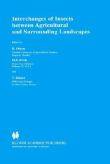Interchanges of insects between agricultural....
Ekbom, B \ Irwin, M
Éditeur : KLUWER BOSTON
ISBN papier: 412822903
Parution : 2000
Code produit : 1267711
Catégorisation :
Livres /
Science /
Biologie /
Zoologie
Formats disponibles
| Format | Qté. disp. | Prix* | Commander |
|---|---|---|---|
| Livre papier | En rupture de stock** |
Prix membre : 190,90 $ Prix non-membre : 200,95 $ |
*Les prix sont en dollars canadien. Taxes et frais de livraison en sus.
**Ce produits est en rupture de stock mais sera expédié dès qu'ils sera disponible.
Description
The rationale for this book is based on an appreciation of the fact that all insects are profoundly influenced by their surroundings. Generally the interactions between insect pests, their host plants, and their natural enemies have been studied within a specific crop. However, agroecosystems are much more than fields in which we grow our crops. Non-crop elements in the landscape can have a substantial impact on the composition of insect communities in an agricultural setting. Investigations on the influence of habitat diversification on pest population dynamics have increased. Through an understanding of how landscape structure influences the fitness and survival of insect species, we may be able to find ways to optimize land use. Optimization in this context is twofold: the design of the landscape should, as far as possible, be advantageous for the natural enemies of agricultural pests while also allowing the highest possible biodiversity.























